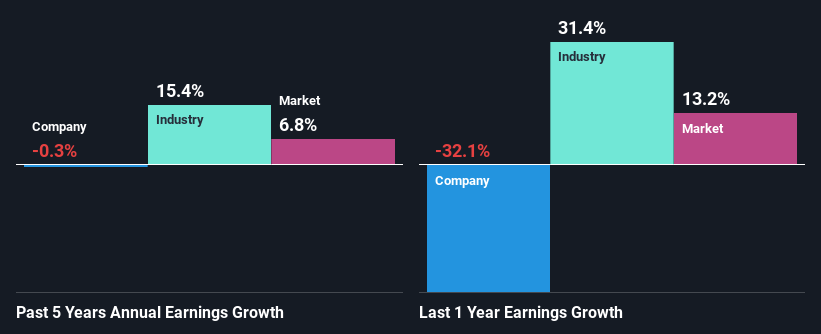Can Mixed Fundamentals Have A Negative Impact on Freightways Limited (NZSE:FRE) Current Share Price Momentum?
Most readers would already be aware that Freightways' (NZSE:FRE) stock increased significantly by 15% over the past three months. However, we wonder if the company's inconsistent financials would have any adverse impact on the current share price momentum. Particularly, we will be paying attention to Freightways' ROE today.
Return on Equity or ROE is a test of how effectively a company is growing its value and managing investors’ money. Simply put, it is used to assess the profitability of a company in relation to its equity capital.
Check out our latest analysis for Freightways
How To Calculate Return On Equity?
The formula for ROE is:
Return on Equity = Net Profit (from continuing operations) ÷ Shareholders' Equity
So, based on the above formula, the ROE for Freightways is:
12% = NZ$40m ÷ NZ$337m (Based on the trailing twelve months to December 2020).
The 'return' is the yearly profit. So, this means that for every NZ$1 of its shareholder's investments, the company generates a profit of NZ$0.12.
Why Is ROE Important For Earnings Growth?
Thus far, we have learned that ROE measures how efficiently a company is generating its profits. Depending on how much of these profits the company reinvests or "retains", and how effectively it does so, we are then able to assess a company’s earnings growth potential. Assuming everything else remains unchanged, the higher the ROE and profit retention, the higher the growth rate of a company compared to companies that don't necessarily bear these characteristics.
A Side By Side comparison of Freightways' Earnings Growth And 12% ROE
To begin with, Freightways seems to have a respectable ROE. Yet, the fact that the company's ROE is lower than the industry average of 17% does temper our expectations. On further research, we found that Freightways' earnings over the past five years have been pretty flat. Bear in mind, the company does have a respectable level of ROE. It is just that the industry ROE is higher. So there might be other reasons for the flat earnings growth. For example, it could be that the company has a high payout ratio or the business has alloacted capital, for instance.
Next, on comparing with the industry net income growth, we found that the industry grew its earnings by9.5% in the same period.
Earnings growth is an important metric to consider when valuing a stock. What investors need to determine next is if the expected earnings growth, or the lack of it, is already built into the share price. By doing so, they will have an idea if the stock is headed into clear blue waters or if swampy waters await. Is Freightways fairly valued compared to other companies? These 3 valuation measures might help you decide.
Is Freightways Efficiently Re-investing Its Profits?
The high three-year median payout ratio of 74% (meaning, the company retains only 26% of profits) for Freightways suggests that the company's earnings growth was miniscule as a result of paying out a majority of its earnings.
Additionally, Freightways has paid dividends over a period of at least ten years, which means that the company's management is determined to pay dividends even if it means little to no earnings growth. Based on the latest analysts' estimates, we found that the company's future payout ratio over the next three years is expected to hold steady at 79%. Still, forecasts suggest that Freightways' future ROE will rise to 26% even though the the company's payout ratio is not expected to change by much.
Conclusion
Overall, we have mixed feelings about Freightways. On the one hand, the company does have a decent rate of return, however, its earnings growth number is quite disappointing and as discussed earlier, the low retained earnings is hampering the growth. Having said that, looking at current analyst estimates, we found that the company's earnings growth rate is expected to see a huge improvement. To know more about the company's future earnings growth forecasts take a look at this free report on analyst forecasts for the company to find out more.
This article by Simply Wall St is general in nature. It does not constitute a recommendation to buy or sell any stock, and does not take account of your objectives, or your financial situation. We aim to bring you long-term focused analysis driven by fundamental data. Note that our analysis may not factor in the latest price-sensitive company announcements or qualitative material. Simply Wall St has no position in any stocks mentioned.
Have feedback on this article? Concerned about the content? Get in touch with us directly. Alternatively, email editorial-team (at) simplywallst.com.

 Yahoo Finance
Yahoo Finance 